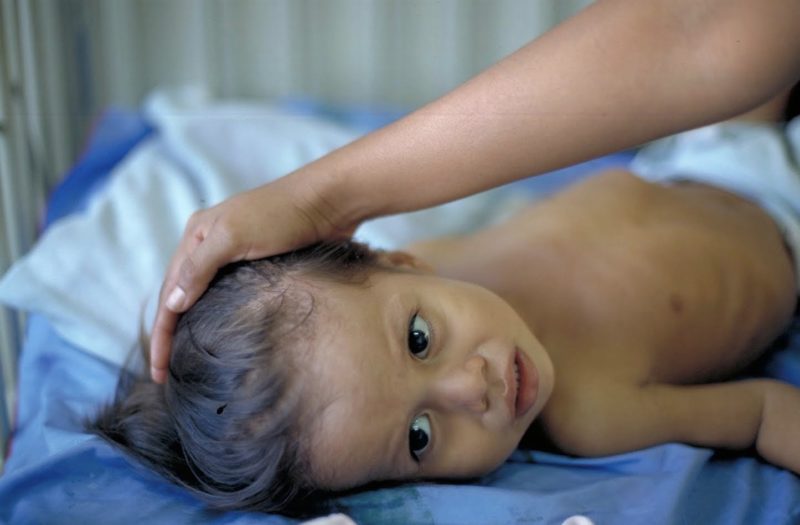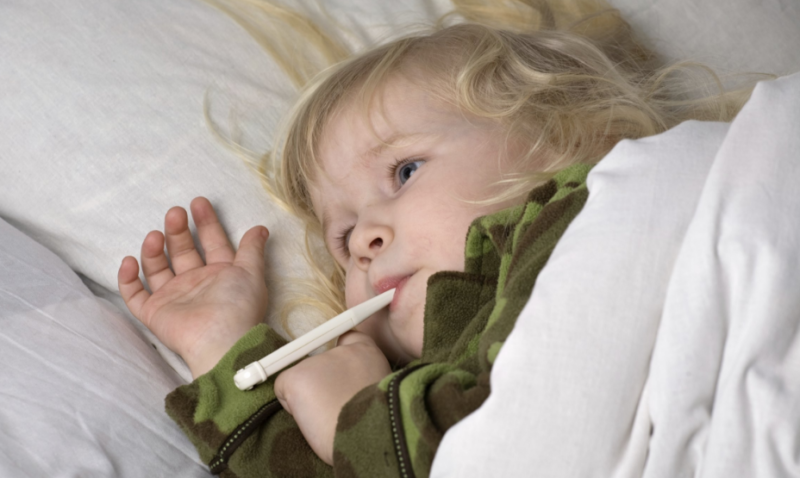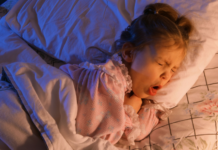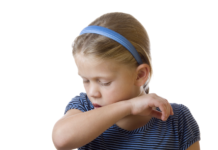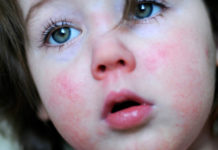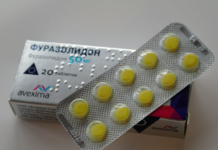Meningitis is generally called a whole complex of neuroinfections of the meninges, which often affect children. Delay in treatment leads to serious consequences, often fatal, therefore, the initial symptoms of meningitis in children should be known to all parents.
Material Content:
Causes of meningitis in children
Inflammatory processes in the membranes of the brain or spinal cord provoke pathogenic microorganisms, most often bacteria, viruses, less often fungi, protozoa. The likelihood of developing the disease depends on the state of immunity, the permeability of the blood-brain barrier - the barrier between neurons and blood. In children, these protective systems are imperfect, the pathogen spreads faster, penetrates the brain shells more easily than in adults.
Primary meningitis develops in a healthy child, as an independent pathology, secondary - on 3-4 days after the onset of another disease. The trigger is any inflammatory focus in the body: intestinal infections, ENT organs, boils, flu, even caries.
Pathogens enter the lining of the brain in the following ways:
- Airborne. Pathogenic microbes are spread by sick people and healthy passive carriers of infectious agents when coughing, sneezing, talking.
- Contact household. Pathogens are transmitted through common objects, food.
- Hematogenous. Pathogens travel with the bloodstream from the focus of inflammation to the brain, penetrate the placenta of a pregnant woman to the fetus.
- Oral fecal.In this way, intestinal bacteria and viruses spread: first they enter the external environment with feces, then into the body with insufficient hygiene.
- Lymphogenic. Pathogens spread through the blood lymph.
- Contact. With injuries to the spine or head, microbes enter the cerebrospinal fluid directly through an open wound.
- Transmissive. Arboviruses are transmitted through the bites of an encephalitis tick.
Risk factors include hypothermia, climate change, nervous shock, excessive mental and physical stress, unbalanced nutrition, leading to weight loss.
Outbreaks of the disease are more often noticed in winter and spring.
Disease classification
By etiology, there are 4 species that are diagnosed in childhood. They are indicated in a table listing typical pathogens.
| Bacterial: | Viral: |
| • meningococci; • pneumococci; • staphylococci; • Pseudomonas aeruginosa; • hemophilic sticks; • tuberculosis bacilli; • enterobacteria. | • Koksaki; • ECHO; • other enteroviruses; • herpes viruses; • mumps, rubella, measles; • adenoviruses; • arboviruses; • cytomegaloviruses. |
| Fungal: | Protozoal or parasitic: |
| • cryptococci; • candida; • coccidia. | • Toxoplasma gondii; • unicellular amoeba Naegleria fowleri. |
Fungal, parasitic form is diagnosed in weakened children with immunodeficiency. Rarely, a mixed form occurs when several types of the pathogen are combined.
By the nature of the inflammatory process of the cerebrospinal fluid, cerebrospinal fluid, purulent and serous species are distinguished. The first develops with a bacterial lesion, is more difficult to treat, more often gives complications. Liquor becomes turbid, changes color to whitish, yellowish, bluish. Serous meningitis in children is often caused by viruses, it is easier to tolerate, and is more quickly treated. Cerebrospinal fluid remains transparent, the color does not change.
According to the flow rate, the following forms are distinguished:
- reactive - develops in a few hours;
- acute - symptoms intensify for 2 to 3 days, then decline;
- subacute - signs of inflammation do not last longer than 2 weeks;
- chronic lasts more than a month, symptoms increase or gradually soften.
The severity of the disease depends on the depth of inflammation. Panmeningitis covers all 3 membranes, pachymeningitis is the upper hard, arachnoiditis is the middle arachnoid, leptomeningitis is the lower soft and arachnoid.
How to recognize an ailment by the first signs
The first signs of meningitis do not depend on the type of pathogen, reminiscent of the onset of acute respiratory infections, SARS:
- temperature rises;
- loss of appetite;
- the pulse quickens;
- pale, dry mucous membranes;
- shortness of breath appears, weakness.
Meningeal symptoms occur as cerebrospinal fluid secretion increases, brain tissue edema, increased intracranial pressure:
- There is a painful headache, it intensifies with movement, loud sounds, bright light, overshadows other symptoms.
- Due to damage to the center of thermoregulation of the brain, the temperature does not go astray with the usual antipyretic drugs.
- Irritation of the vomiting center leads to constant nausea, attacks of vomiting do not depend on food, do not bring relief.
Individually, the listed symptoms do not indicate inflammation of the meninges, but their combination is a reason to immediately call an ambulance.
In infants, the disease begins with causeless irritability, anxiety of constant monotonous crying. With an increase in intracranial pressure, the fontanel swells, veins on the head. Irritation of nerve endings provokes convulsions of individual muscles, tremor of the arms.
Symptoms and clinical presentation
In 80% of cases, children develop additional meningeal symptoms. Impaired transmission of nerve impulses leads to stiffness of muscle fibers: they become stiff, tense, do not completely relax.
Here's how to recognize a child’s meningitis by muscle condition:
- If in a supine position raise the leg up and bend the knee joint at an angle of 90 degrees, then it will not be possible to straighten it. Until 4 months of age, the disease is not detected by this method.
- When tilting the head forward, the chin does not reach the chest.
- When you press the cheeks under the cheekbones, the shoulders rise.
- When bending one leg, lying on the back, the second involuntarily repeats the movement.
- When raising the head from a prone position, the knee joints are automatically bent.
- The breastfeed lifts its legs to the tummy, throws its head back, if it is held under the armpits.
- Due to the tension of the muscles of the neck and neck, the child lies on his side, his head thrown back, his knees bent.
The meningococcal appearance is accompanied by a rash in the form of red spots of irregular shape on the skin, mucous membranes, with time they turn blue and merge. In advanced cases, self-perception is impaired, consciousness is confused, sound and visual hallucinations appear.
Symptoms of viral meningitis in babies up to 3 years old are sometimes erased, so if even one meningeal clinical sign appears, they immediately call a doctor.
Diagnostics
The only way to reliably confirm or refute meningitis is lumbar puncture and cerebrospinal fluid examination.
Through a puncture between the vertebrae in the lumbar region, cerebrospinal fluid is obtained, then examined visually and in the laboratory:
- color;
- transparency;
- cell composition;
- do bacterioscopic analysis;
- carry out PCR diagnostics.
Research results help to identify the type of pathogen that becomes decisive when choosing a treatment regimen for a disease. Biochemical and clinical blood tests show the presence of a focus of infection in the body, but are not informative for the diagnosis of meningitis. Radiography, CT or MRI are prescribed to check the condition and damage of the brain.
Treatment of meningitis in a child
After diagnosis, the child is hospitalized, treated under the control of an infectious disease specialist and a neurologist.
The choice of etiotropic drugs depends on the etiology of the disease:
- When bacteria are affected, antibiotics are prescribed.
- In case of a mild viral form, symptomatic drugs are used, in severe cases - corticosteroids, Arbidol, interferon.
- Fungal appearance is treated with antimycotics.
- Parasitic - antiprotozoal, antihistamines, corticosteroids.
- With the tuberculous form, streptomycin is prescribed.
Treatment of meningitis in children includes symptomatic therapy, in which the following groups of drugs are used:
- diuretics to relieve cerebral edema, reduce intracranial pressure;
- antiemetic;
- antipyretic;
- painkillers;
- anticonvulsants;
- intravenous saline solutions for regulating the water-salt balance, elimination of toxins.
During the recovery period, general strengthening and vitamin preparations are prescribed.
Complications and Predictions
If you take the medicine from the first hours of the manifestation of the disease, a full recovery occurs without consequences.
The duration of treatment depends on the type of pathogen:
- viral infection lasts 1 to 2 weeks;
- bacterial - from 10 to 20 days;
- fungal - from 1.5 to 2.5 months;
- protozoal - 1 week;
- tuberculosis - from 2 months.
Adverse effects occur when treatment is delayed for 1 to 2 days, and with the reactive form of the disease, the count goes to the clock.
If you miss the time, within 5 years after recovery, the following complications are revealed:
- regular headaches;
- cramps
- lag of physical, mental development;
- epileptic seizures, if there is a predisposition;
- hearing impairment, vision;
- strabismus.
After recovery, the child is observed at the pediatrician for 2 years.
Prevention
The following recommendations will help reduce the risk of meningitis:
- The child’s immune system is constantly strengthened with daily walks, hardening, a balanced diet, and drugs are not given uncontrollably.
- Do not violate the vaccination schedule.A universal vaccine for meningitis has not been invented, but routine vaccinations reduce the likelihood of inflammation of the meninges. These include vaccines against meningococcus, pneumococcus, Haemophilus influenzae B, chickenpox, measles, mumps, rubella.
- During seasonal colds and flu, visits to public places are limited. The rooms are often aired: pathogens die in the fresh air, under ultraviolet rays.
- They teach you to wash your hands before meals and after the toilet, rinse vegetables and fruits. Not allowed to swim in untested reservoirs.
- In contact with patients with meningitis, a preventive course of antibiotic therapy is prescribed.
Infection of the meninges is a dangerous but treatable pathology. When the first symptoms appear, the task of the parents is to immediately seek medical help.



